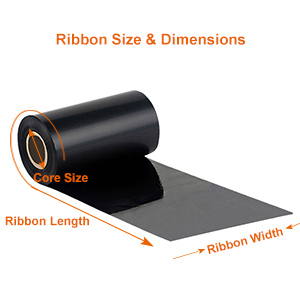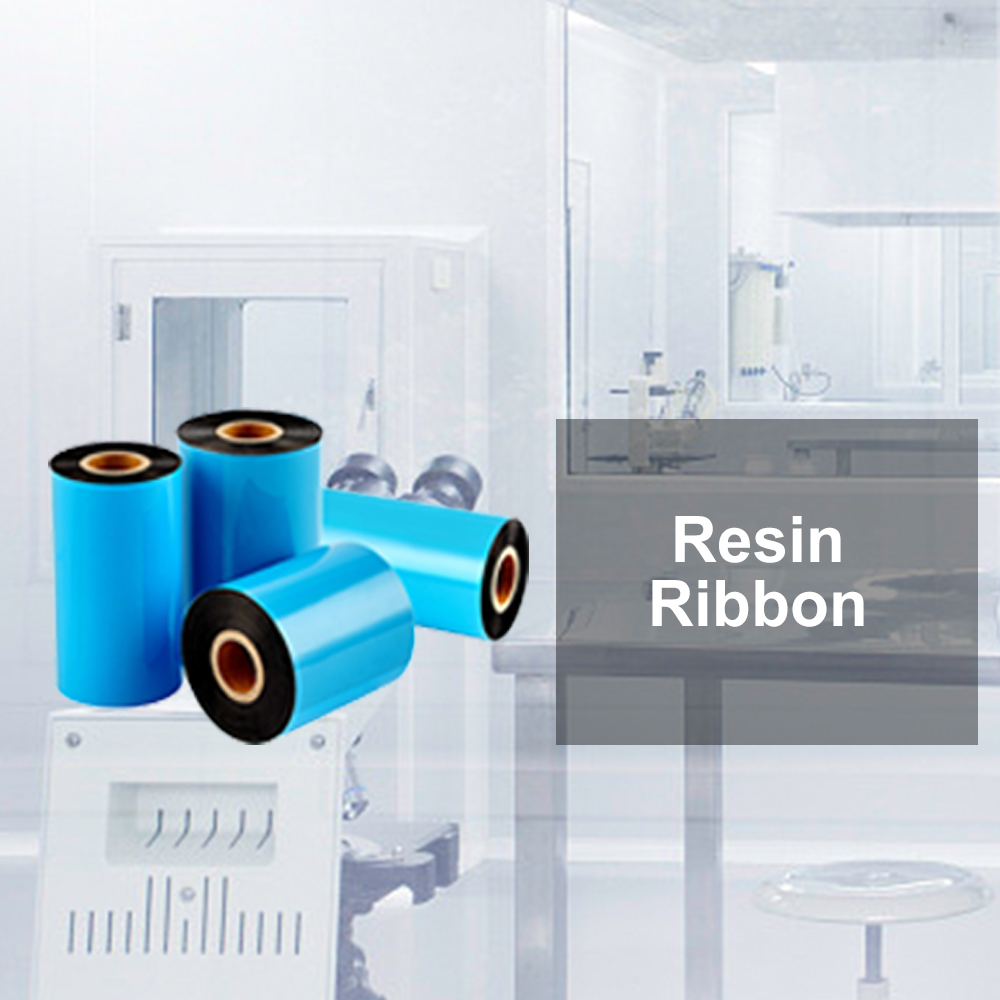How Much Can You Print with a Standard Thermal Transfer Ribbon Roll?
What Factors Determine the Print Yield of a Thermal Ribbon Roll?
Knowing what influences print quantities marks the roll of the thermal ribbon is central to the effective management of resources.
Ribbon Size & Dimensions
| The physical dimensions of a thermal ribbon are foundational in determining its print yield. Among the standard sizes, the most common and striking balance between length and width for application is probably the 4.33 in x 984 ft (110 mm x 300 m) roll. This size is widely known to fit most printing applications, so it would give a reasonable benchmark for estimated output. The width of 110mm accommodates a variety of label sizes, while the length of 300 meters ensures a substantial print run before the need for replacement arises. |  |
In addition to choosing the right ribbon size, it's important to know when replacement is necessary to maintain print quality and efficiency
Print Settings' Influence
The configuration of the settings of your printer plays a very big role in how fast you'll use up a roll of ribbon. Print density refers to the amount of ink transferred to the card to form an image or text. The higher the density setting, the richer and more saturated the print is while using more ribbon. In contrast, the lower the density, the less ribbon used, but the lighter the prints can be. Another factor that has an effect on ribbon consumption is print speed. Some users have even reported increased ribbon usage and diminished quality of prints when the print speed is too high since this raises the tension on the ribbon.
Label Size and Spacing
The size of the labels you are printing and even the spacing between them determine how far your ribbon will stretch. Larger labels use more ribbon, as do those with widely spaced designs because of the extra ribbon that feeds through the printer without being printed on. Properly setting the label size and minimizing gap between prints can increase a user's thermal ribbon roll life by quite an appreciable amount.
Environmental Variables
The external environmental conditions have a telling effect on print yield. Ideally, keep the thermal ribbons in a cool and dry place to prevent any early degradation of the ink. Besides, constant printer maintenance is imperative: clean printheads and hardware do a great deal toward efficient ribbon usage and quality prints at all times. High humidity, extreme temperatures, and dust accumulation could affect your ribbon's efficiency, making you go through rolls faster than expected.
How Do You Calculate the Number of Prints from a Thermal Ribbon Roll?
To demystify how many prints or labels you can get out of a thermal ribbon roll, there's a bit of simple arithmetic involved. It all comes down to understanding the basic formula that ties together the length of your ribbon and the size of each label.
The Basic Formula
The general formula to estimate print yield is:
(Number of Labels per Row) x (Label Rows per Meter) x (Total Length of the Ribbon in Meters) = Total Print Yield
This formula elaborates on the total number of prints that can be received from a single roll.
Calculation Guide for Labels, Step-by-Step
We can reduce this formula into a simple calculation guide if we use the example of a standard 110mm x 300m ribbon roll.
-
Calculate the Number of Labels per Row:
- Measure the width of one label (in millimeters).
- Divide the ribbon width by the label width.
- if the result is not a whole number, round down to the nearest whole number to ensure the labels fit within the ribbon width.
-
Determine Label Rows per Meter:
- Measure the height of one label plus any gap between labels (in millimeters).
- Convert this measurement to meters (divide by 1000).
- Calculate how many label rows fit into one meter by dividing one by the label height in meters.
-
Identify Total Length of the Ribbon Roll:
- This should be specified by the manufacturer; for this example, it is 300 meters.
-
Bring It All Together:
- Multiply the number of labels that fit across the width of the ribbon (step 1) by the number of label rows per meter (step 2).
- Multiply this number by the total length of the ribbon roll in meters (step 3).
- The final figure provides the estimated total number of labels you can print with one ribbon roll.
Example Calculation:
Assume you are using a 110mm wide ribbon to print labels that are 50mm wide and 30mm high, with a 2mm gap between labels.
- Labels per Row = Ribbon Width / Label Width
- Labels per Row = 110 mm / 50 mm
- Labels per Row = 2.2, which we round down to 2 labels per row.
- Label Rows per Meter = 1 / (Label Height + Gap)
- Label Rows per Meter = 1 / (30 mm + 2 mm)
- Label Rows per Meter = 1 / 32 mm per label row
- Label Rows per Meter = 1 / 0.032 meters per label row
- Label Rows per Meter ≈ 31.25, which is the number of label rows in one meter of ribbon.
- Total Length of the Ribbon = 300 meters (as specified)
- Total Print Yield = (Labels per Row) x (Label Rows per Meter) x (Ribbon Length in Meters)
- Total Print Yield = 2 x 31.25 x 300
- Total Print Yield = 18,750 labels per roll
How to Optimize Your Print Yield
Getting the most out of your thermal ribbon rolls means tweaking your print settings and being smart about how you use your ribbons.
Best Practices in Print Settings
- Lower Print Density: Use just enough ink for a clear print, which saves ribbon.
- Slow Down the Speed: Print a bit slower to use less ribbon and still keep things legible.
- Keep Your Printer Tuned: A well-calibrated printer wastes less ribbon because it prints right the first time.
- Use Economy Modes: If your printer has settings that save on ribbon, try them out.
Effective Use of Ribbon
Make sure you’re using every inch of ribbon effectively:
- Align Correctly: Line up your ribbon with your labels so you're not printing between them and wasting ribbon.
- Design Wisely: Make labels with smaller text and fewer graphics to use less ink.
- Tighten Up Spaces: Keep the empty space at the edges of your labels and between them as small as possible.
- Match Ribbon to Label: Use the right type of ribbon for your labels; don't waste heavy-duty ribbon on simple paper labels.
- Regular Cleaning: Keep your printer clean to avoid unnecessary reprints due to dust or dirt getting in the way.
Maximize Thermal Ribbon Efficiency
What leads to real efficiency and cost control in thermal printing is a number of factors that affect ribbon yield. This relates to everything from choosing the proper ribbon size and printer configuration to optimizing label design and printer maintenance—all of which come into play with respect to a matter such as the question of just how much you really can print with a standard thermal ribbon roll. It's the little things that can be very meaningful for real savings over time. Embracing the best practices in both print setting and ribbon use will ensure that not only are businesses conserving resources but also maintaining high-quality printing standards. Planning, when combined with resource management strategies, can dramatically extend the life of ribbons and significantly reduce wastage while printing more confidently at a lower cost.



